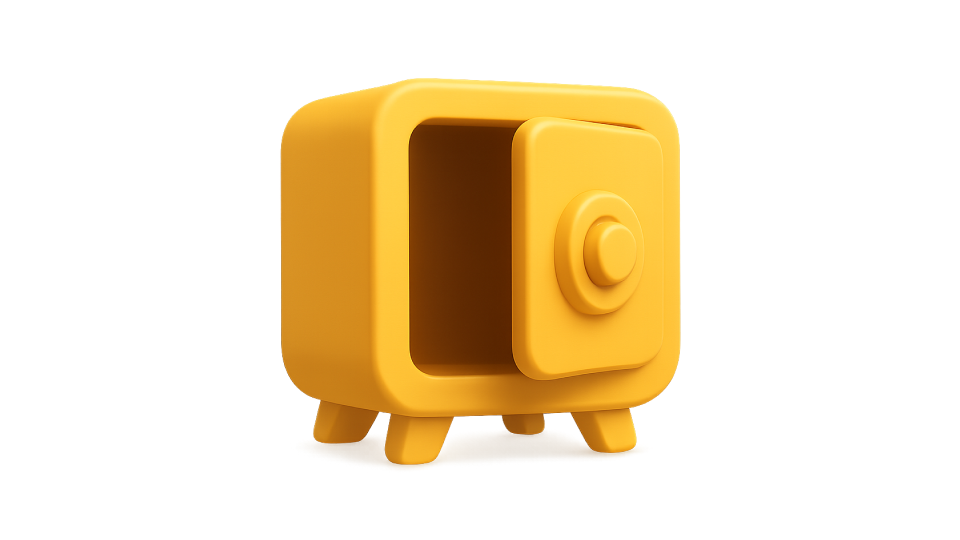When you think about your company’s assets, what comes to mind first? Your bank account, equipment, or everything you’ve got in your storefront, right? There’s more: today, digital assets are a fundamental part of any business’s value.
Quick clarification: in this article, the term “digital assets” does not refer to cryptocurrencies or tokens. We’re talking about the online resources that make up your company’s digital presence and equity: your website, social profiles, content, data, and brand.
What Is a Digital Asset?
A digital asset is any virtual resource that belongs to your business, creates value, and can be managed, transferred, or monetized. It isn’t a physical object, but it has a very real impact on revenue, reputation, and operational efficiency.
Examples include:
- Your website and custom domain.
- Social media profiles and the community you’ve built.
- Content (articles, photos, videos, podcasts, manuals, etc.).
- Databases (customers, leads, inventory).
- Apps and software (internal tools or commercial products).
- Your registered brand and visual identity.
They’re assets because you can measure performance, sell them, improve them, and scale their value over time.

Types of Digital Assets by Business Model
Digital assets range from your website to your social profiles. A well-designed site is a digital business card; add an online store and you’ve got a 24/7 revenue channel.
Each industry weighs assets differently. Here are concrete examples:
1) E-commerce / Online Stores
- Website or sales platform (Shopify, WooCommerce, etc.)
- Digital product catalog
- SEO-ready images and descriptions
- Customer reviews (trust assets)
- Customer and abandoned-cart databases
- Payment and logistics integrations
2) Professional Services (law, accounting, architecture, etc.)
- Corporate website with portfolio or case studies
- Authority-building blog
- Client and prospect database
- Downloadable docs (guides, contracts, reports)
- Personal brand and digital reputation on LinkedIn and Google
3) Clinics and Medical Practices
- Website with online scheduling and practitioner profiles
- Patient management system (software or in-house app)
- Educational content and medical articles (blog or YouTube)
- Google and social reviews
- Patient database and digital consents
4) Rental Companies (medical equipment, machinery, tools, etc.)
- Up-to-date digital catalog
- Online booking or quote requests
- Client database and digital contracts
- Photos, spec sheets, and PDF manuals
- Online tracking or maintenance tools
5) Restaurants, Cafés, and Bars
- Website with an interactive menu
- Active profiles on social media and Google Maps
- Online booking or ordering system
- Customer database and loyalty program
- Reviews and mentions in local media/foodie sites
6) Software and Tech Companies
- Website with documentation and product demo
- Source code and private repositories
- Support desk and ticketing system
- Digital brand (name, domain, visual identity)
- Technical blog or tutorial video channel
- Usage analytics and user feedback
7) Schools, Training Centers, and Academies
- LMS / course platform
- Learning materials (videos, PDFs, quizzes)
- Student database and digital certificates
- YouTube channel or Discord community
- Educational brand and online reputation
8) Entrepreneurs and Content Creators
- Personal site or portfolio
- Social channels (Instagram, YouTube, TikTok)
- Original content (videos, photos, articles)
- Subscriber base or newsletter
- Collaborations and content licensing
The Role of Content and Branding
Content — from blogs to videos — is also a digital asset that strengthens your brand. These resources don’t just attract clients; they build a unique identity for your business. Custom web apps can become internal tools that boost efficiency and improve user experience.
Bottom line: treat business digital assets as an investment. A great website, an online store, or quality content aren’t short-term tactics — they’re resources that keep generating value over time. They grow with your company and become part of its digital portfolio.
Turn Digital Assets into a Competitive Advantage
At the end of the day, digital assets don’t just modernize your operations — they give you an edge. An owner who understands the value of these assets will see that investment translate into growth, a stronger online presence, and a more resilient brand. In the event of a merger or sale, they’re value can be accounted for.
Conclusion: Invest in Your Company’s Digital Assets
Embracing and maintaining your digital assets is a strategic decision that pushes your business forward. It’s not a vanity expense — it’s an investment in your equity.
From your website and social channels to your data, content, and internal tools, every digital piece counts.
Build your digital assets with a long-term vision, and you’ll see it pay off in visibility, trust, and sustainable growth.



